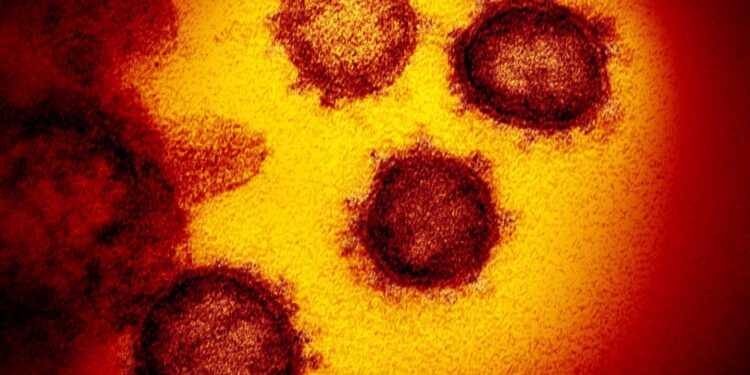Transmission electron microscope image of SARS-CoV-2, the virus that causes COVID-19, emerging from human cells. Credit: NIAID
COVID-19 cases in the United States have shown unexpected oscillating waves every six months between southern and northern states and, to a lesser extent, from east to west, according to research published in Scientific reports.
Public health scientists from the University of Pittsburgh, the University of Ottawa, and the University of Washington have conducted the first detailed analysis to demonstrate and characterize the six-month oscillation of cases in space and time. This analysis provides key information that could inform public health activities, such as vaccination campaigns, that aim to control the virus.
“Winter waves of COVID-19 are consistent with those of other respiratory viruses, but the existence of an additional repeated surge during the summer was unexpected,” said lead author Donald S. Burke, MD, dean emeritus of Pitt’s School of Public Health.
“These waves begin near the southern U.S. border in July and August, when the weather is warmest and humidity is high, factors that typically slow the spread of respiratory viruses. We have no good explanation for why COVID-19 rates should increase during both the warmest and coldest times of the year.”
The research team, which includes lead author Hawre Jalal, MD, PhD, of the University of Ottawa, and Kyueun Lee, PhD, of the University of Washington, says the data suggests that the six-month COVID-19 surge in the United States may be part of a broader pattern sweeping across the North American continent.
Further data are needed to test the hypothesis and determine the exact mechanisms driving these unexpected seasonal oscillations.
More information:
Hawre Jalal et al., Oscillating spatiotemporal patterns of COVID-19 in the United States, Scientific reports (2024). DOI: 10.1038/s41598-024-72517-6
Provided by the University of Pittsburgh
Quote:COVID-19 rates fluctuate every six months in the United States, new study finds (2024, September 17) retrieved September 17, 2024 from
This document is subject to copyright. Apart from any fair dealing for the purpose of private study or research, no part may be reproduced without written permission. The content is provided for informational purposes only.



